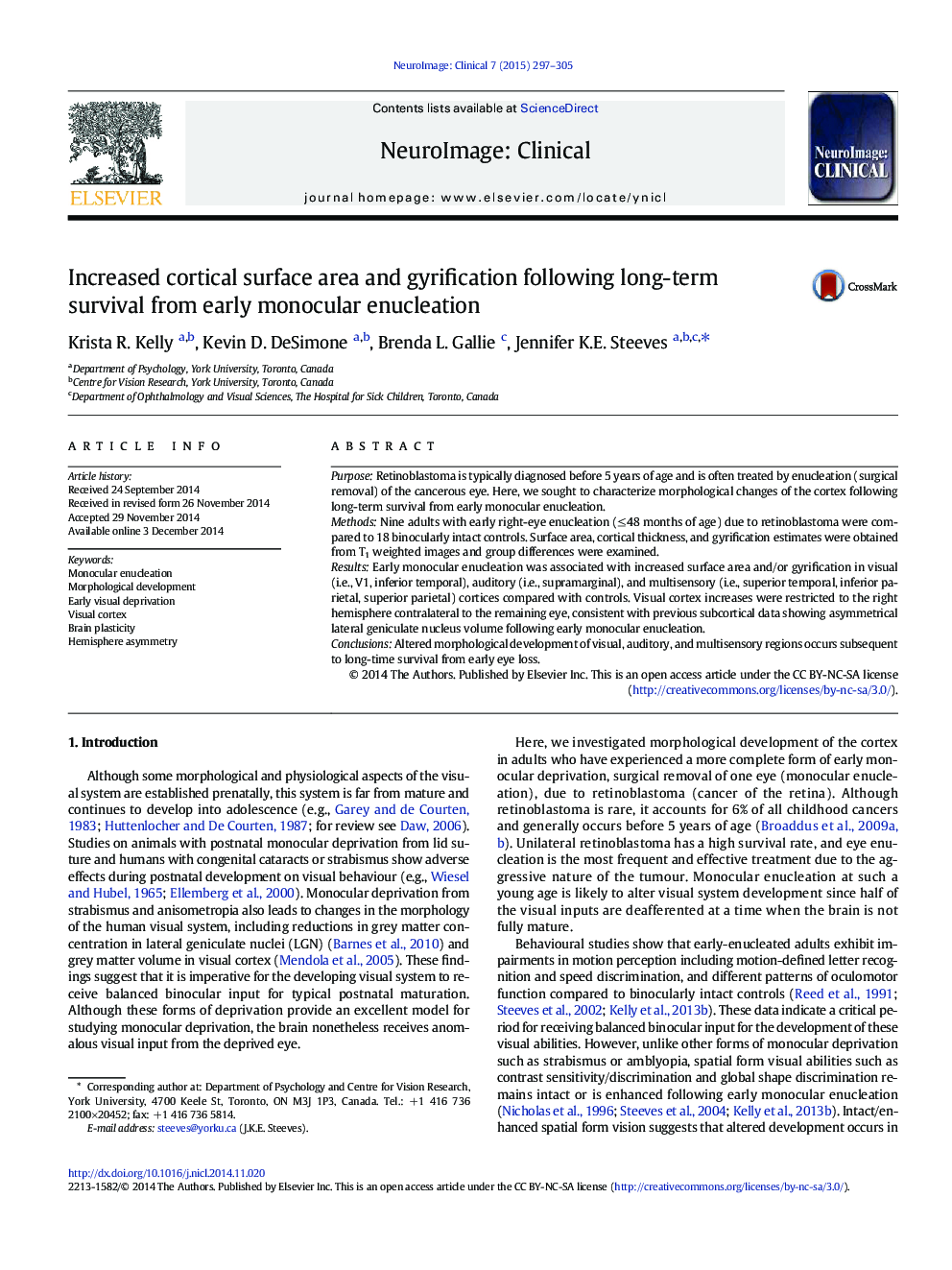| Article ID | Journal | Published Year | Pages | File Type |
|---|---|---|---|---|
| 3075083 | NeuroImage: Clinical | 2015 | 9 Pages |
•Cortical morphology in early monocular enucleation was assessed.•Enucleation resulted in increased surface area and gyrification of the cortex.•Visual cortex increases were exhibited contralateral to the remaining eye.•Non-visual cortex increases in surface area and gyrification were also found.•Altered cortical development occurs following early monocular enucleation.
PurposeRetinoblastoma is typically diagnosed before 5 years of age and is often treated by enucleation (surgical removal) of the cancerous eye. Here, we sought to characterize morphological changes of the cortex following long-term survival from early monocular enucleation.MethodsNine adults with early right-eye enucleation (≤48 months of age) due to retinoblastoma were compared to 18 binocularly intact controls. Surface area, cortical thickness, and gyrification estimates were obtained from T1 weighted images and group differences were examined.ResultsEarly monocular enucleation was associated with increased surface area and/or gyrification in visual (i.e., V1, inferior temporal), auditory (i.e., supramarginal), and multisensory (i.e., superior temporal, inferior parietal, superior parietal) cortices compared with controls. Visual cortex increases were restricted to the right hemisphere contralateral to the remaining eye, consistent with previous subcortical data showing asymmetrical lateral geniculate nucleus volume following early monocular enucleation.ConclusionsAltered morphological development of visual, auditory, and multisensory regions occurs subsequent to long-time survival from early eye loss.
